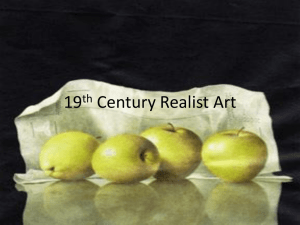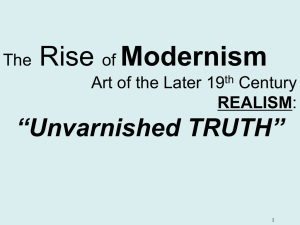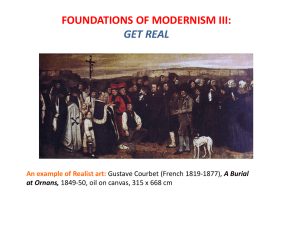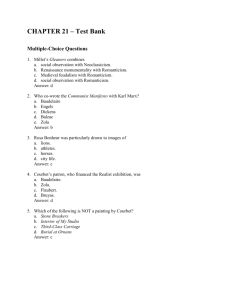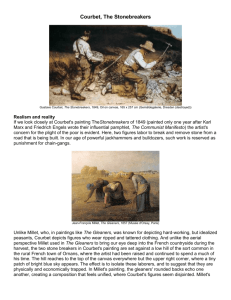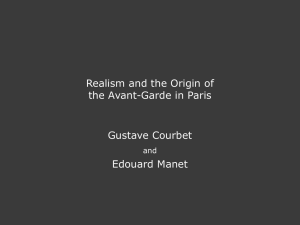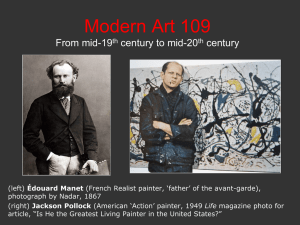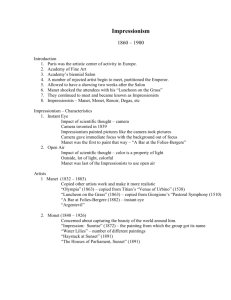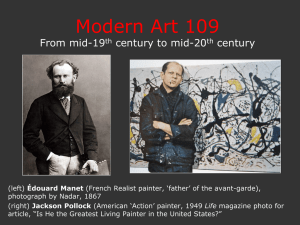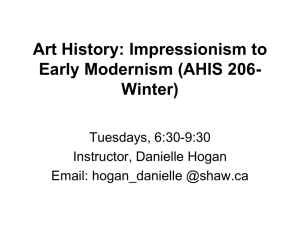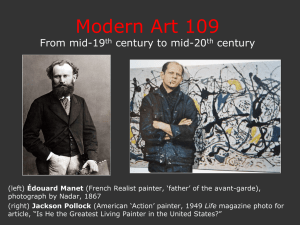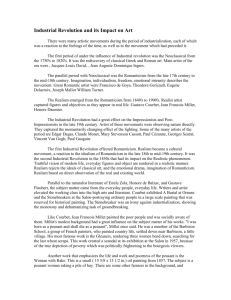Modern Life - Hartford Art School
advertisement
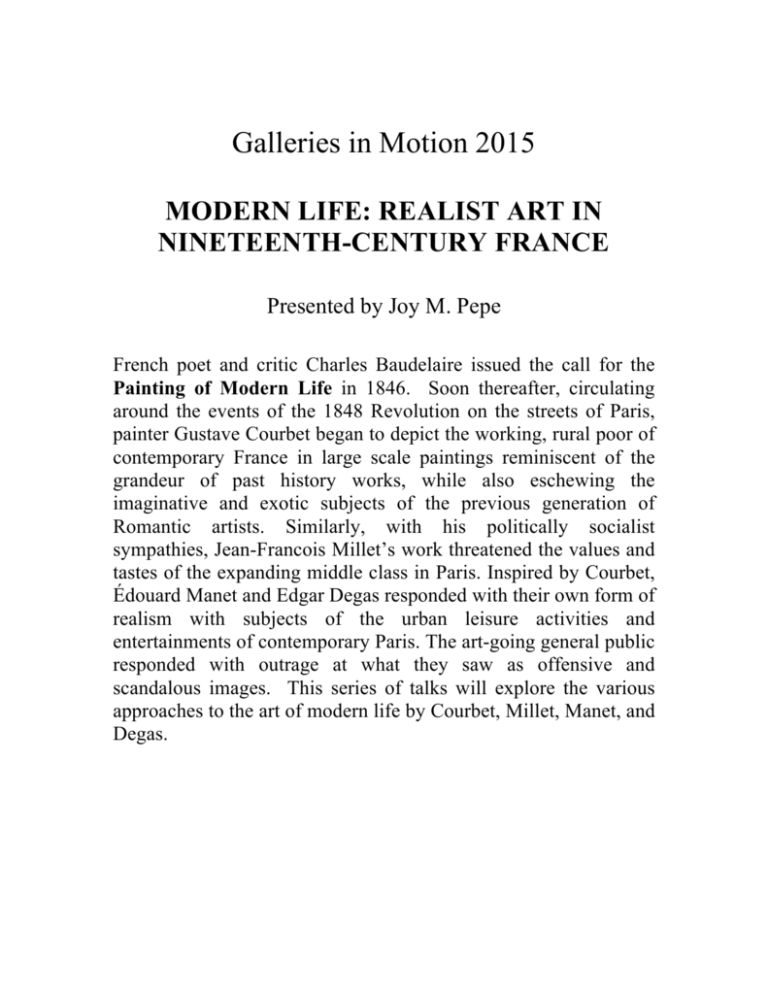
Galleries in Motion 2015 MODERN LIFE: REALIST ART IN NINETEENTH-CENTURY FRANCE Presented by Joy M. Pepe French poet and critic Charles Baudelaire issued the call for the Painting of Modern Life in 1846. Soon thereafter, circulating around the events of the 1848 Revolution on the streets of Paris, painter Gustave Courbet began to depict the working, rural poor of contemporary France in large scale paintings reminiscent of the grandeur of past history works, while also eschewing the imaginative and exotic subjects of the previous generation of Romantic artists. Similarly, with his politically socialist sympathies, Jean-Francois Millet’s work threatened the values and tastes of the expanding middle class in Paris. Inspired by Courbet, Édouard Manet and Edgar Degas responded with their own form of realism with subjects of the urban leisure activities and entertainments of contemporary Paris. The art-going general public responded with outrage at what they saw as offensive and scandalous images. This series of talks will explore the various approaches to the art of modern life by Courbet, Millet, Manet, and Degas. TUESDAY, JANUARY 20, 2 PM, GUILFORD FREE LIBRARY The Revolutionary: GUSTAVE COURBET (1819-1877) At the forefront of the new “avant-garde” Realist movement, Courbet was a committed revolutionary in both his art and politics. His works are the very definition of Realism as he returned to his rural roots on the Swiss border to depict the working poor and simple village life. TUESDAY, JANUARY 27, 2 PM, GUILFORD FREE LIBRARY The Socialist: JEAN-FRANCOIS MILLET (1814-1875) A political radical like Courbet, Millet’s roots were in farming in the French countryside. He was sympathetic to the rural poor, and painted their hard working lives on the land around the village of Barbizon near the Forest of Fontainebleau where he lived. TUESDAY, FEBRUARY 3, 2 PM, SCRANTON LIBRARY, MADISON The Flâneur: ÉDOUARD MANET (1832-1883) Sophisticated and urbane, Manet embraced the modern world of the city of Paris and its constant change and renewal. Deeply imbued in art history, Manet’s work nonetheless managed to cause scandal and outcry from the art-going public when they were first exhibited in the early 1860s, as deliberate attacks on bourgeois taste both in their risqué content and deliberate unfinished qualities. TUESDAY, FEBRUARY 10, 2 PM, SCRANTON LIBRARY, MADISON The Observer: EDGAR DEGAS (1834-1917) Subjects of urban life also attracted Degas and his direct portrayal of cafés, music halls, dancers, racetracks and brothels associate his work closely with Realism. Degas used innovative compositional and spatial devices, inspired by Japanese prints, and a technique that retained a strong linear approach, whether in oil or pastel. LIST OF IMAGES: Courbet: The Stone Breakers, 1849. Oil on canvas; 5’3” x 8’6”. Formerly Gemäldegalerie, Dresden; destroyed in World War II. Millet: The Gleaners, 1857. Oil on canvas; 33 x 44”. Musée d’Orsay, Paris Manet: A Bar at the Folies-Bergère, 1881-82. Oil on canvas; 37 ¾ x 51 ¼”. The Samuel Courtauld Trust, The Courtauld Gallery, London Degas: Absinthe Drinkers, 1876. Oil on canvas; 36 x 29”. Musée d’Orsay, Paris
